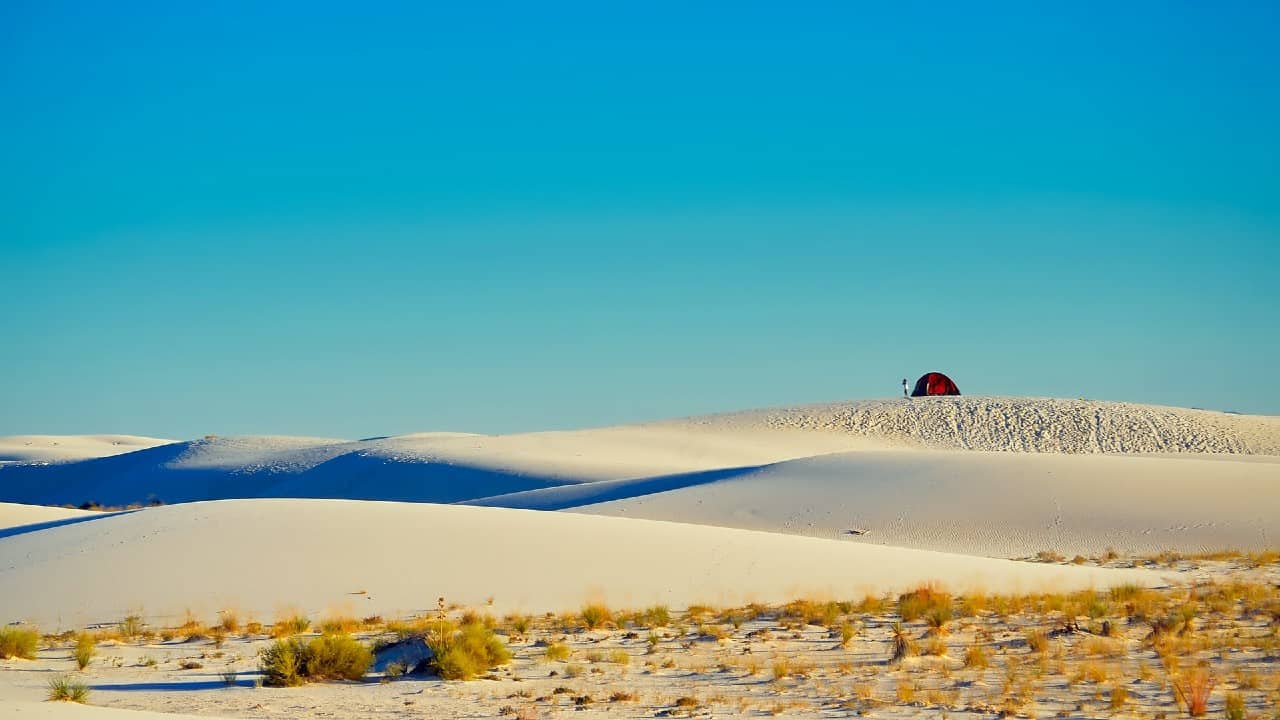Over 500 of the coolest-looking hot air balloons going up each year come October.
Breathtaking scenery and huge swaths of land with way more livestock in it than humans.
On top of it all, everyone there is a connoisseur (and often a producer) of fine wines.
All of this curiosity and much more you can find only in the proud state of New Mexico – once home to Doc Holliday, Billy the Kid, and the founding place of Microsoft.
Despite its gargantuan size (it’s the fifth largest US state), New Mexico is rather sparsely populated. That said, this picturesque state more than makes up its lack of humans with such curiosities as the Rio Grande cutthroat trout (official fish of New Mexico) and some of the most beautiful and tranquil scenery in the world.
More than anything, New Mexico recommends itself as one large camping trip map on which you can explore pretty much any terrain you can think of.
Whether you want deserts with a sea of white sand dunes that you can traverse across, or bustling rivers and cold creeks with clear water, or high mountains with snow – New Mexico’s got it.
This article will discuss dispersed camping in New Mexico and how you can make the most of it.
The Overview
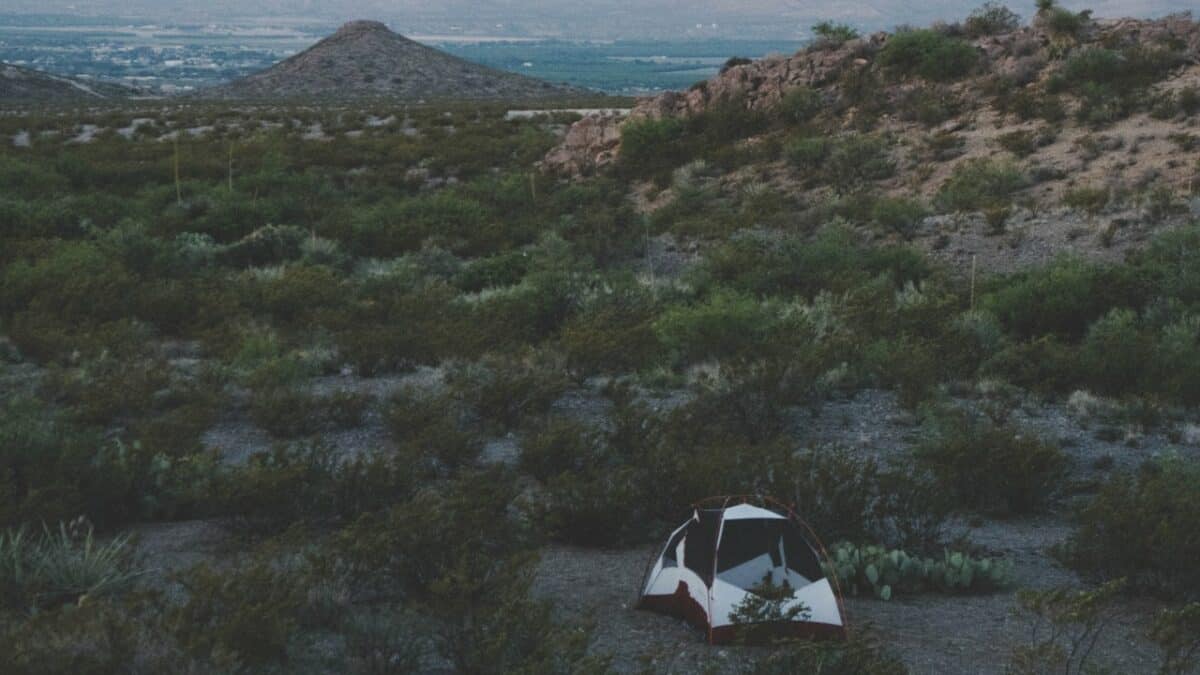
Unless you want to end up like Bugs Bunny, emerging from the ground in the middle of nowhere, brandishing a map, and only then realizing in annoyance that you should have made that left turn at Albuquerque after all – it’s wise to do some homework about New Mexico before you set off on a journey.
While the entire state is well-covered and documented in maps, both real-life and digital, you’ll want to know where you can and can’t go, as well as what the rules are for the places that caught your eye as potential camping spots.
In the passages below, we ventured to answer the most important questions regarding dispersed camping in New Mexico. We’ll talk about what permits you will need for camping and other paperwork you might need, such as car insurance.
Also, we’ll give you a couple of tips on how to find the best spots for dispersed camping in New Mexico, as well as what to pack for your camping trip.
Most importantly, though, we will describe in detail some of the best camping areas in this southern US state, so you can better understand where to head and what to expect if you decide to go there.
Where in New Mexico is Dispersed Camping Allowed?
If you fancy pitching a tent and unfolding your sleeping bag in one of the many cool-looking corners of the state of New Mexico, the good news is – dispersed camping is entirely legal.
Now, as for the question of where you can go camping, the answer is quite simple – pretty much anywhere.
Luckily for the folks who like to go on fun camping trips often, there is only a handful of places in New Mexico where it’s forbidden to camp.
So, if you follow the local and state rules that we’re going to clarify below, chances are – you will be able to have loads of fun making marshmallows and telling ghost stories to your friends six ways to Sunday.
Of course, private properties are out of bounds unless you have a direct permission of the owner. As far as public property is concerned, as long as you adhere to some of the basic rules of camping and you respect the land you’re on – you’ll be fine.
Two major organizations regulate camping rules and regulations in New Mexico – BLM (Bureau of Land Management) and USFS (United States Forest Service).
In the sections below, we’ll detail the dispersed camping rules for both of these, so you know what to expect and who to contact in case you need any help.
BLM Dispersed Camping

Here are some rules you will need to acknowledge before you set up a camping tent in a BLM area:
- BLM dispersed camping near a commercial camping site is not allowed. You need to be at least one mile away. So, recreation areas, trailheads, designated picnic spots, boat ramps and anywhere else where there’s a pay-to-camp theme going on, so to speak – is out of bounds.
- New Mexico authorities pay special attention to preserving the local wildlife. For this reason, pitching a tent near a 900ft radius of a developed water source (guzzlers, watering troughs, and other open reservoirs) is forbidden.
- Also, other water sources that are not necessarily primarily intended to be used by the New Mexico black bear, the roadrunner, or its arch-nemesis Wily E. Coyote, are off-limits in the radius of 200ft.
- As a rule of thumb – the folks to talk to about anything camping would be the Bureau of Land Management. Nine times out of ten, they will be in charge of the land you’re ogling for your next camping spot.
If a specific area has a warning issued by the BLM that says something along the lines of ‘CAMPING FORBIDDEN’ this would be another no-go zone.
This one may sound a tad odd, but it makes perfect sense if you think about it. More a general guideline than a rule, one of the regulations instructs campers not to camp in the middle of a large field or a clearing, as this can disturb the picturesque nature of the surrounding area.
As another general rule of thumb, the BLM sort of broadly hopes that campers would camp at the same spots where other campers were before them.
To encourage this, the BLM has created some camping areas near popular hiking trails.
For How Long Can You Camp in One BLM Area?
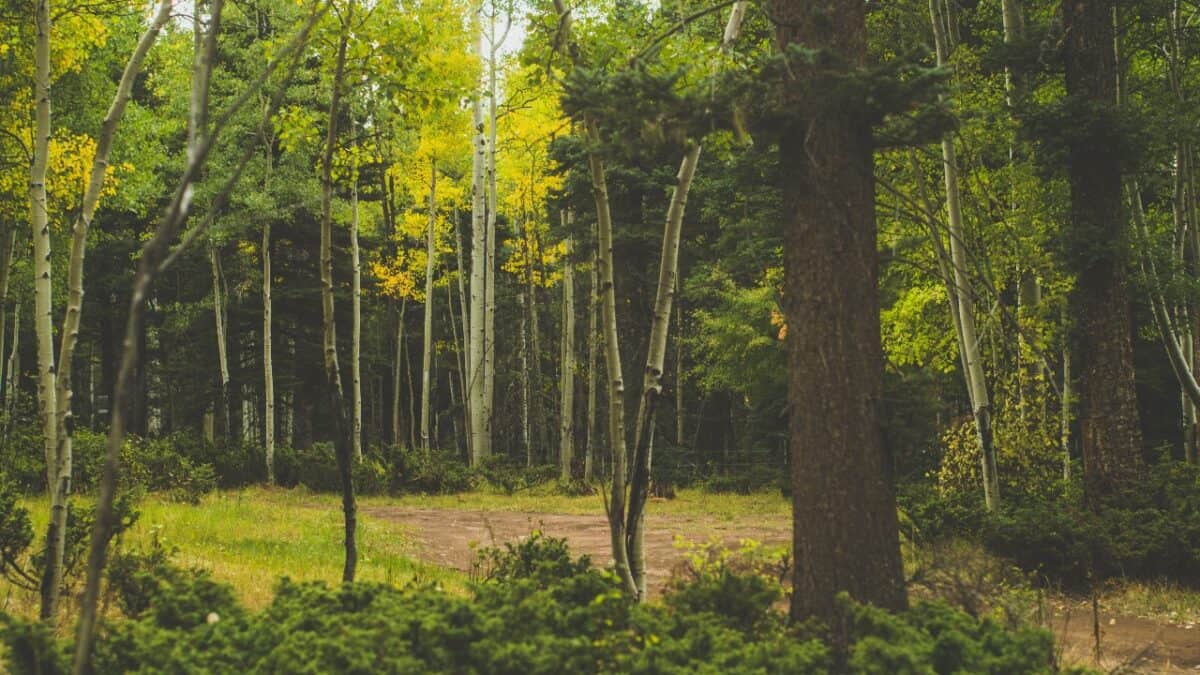
If the patch of land you want to camp on is legally under the jurisdiction of the BLM, the rules for how long you can stay are the following:
You can stay at one spot for two weeks – within 28 days.
To unwrap this, you can camp at a single sight for two weeks in bulk, but then you cannot be there for the other two weeks.
Alternatively, you can camp at that spot for a couple of days here and there within these 28 days – as long as the total number of days does not exceed 14.
This does not mean you can only camp for 14 days in New Mexico. You can do more than that, but you must relocate to another area after the 28-day period has elapsed.
This new area must be at least 25 miles from where you were initially. So, as long as you respect this, you can pretty much hop around a New Mexico area for months on end and camp to your heart’s content.
For more detailed information about the permits issued by the BLM, as well as about some general rules of thumb for campsite selection, you can visit this website.
Additionally, if you’re trying to find dispersed camping spots in New Mexico on BLM-regulated land, it’s always a good idea to reach out to the local office. This way you can get more precise info before you set off on your camping trip.
Here are the links to the local BLM offices in New Mexico:
Albuquerque District Office – located in Albuquerque
Farmington District Office – located in Farmington
Pecos District Office – located in Roswell
Las Cruces District Office – located in Las Cruces
New Mexico State Office – located in Santa Fe
USFS Dispersed Camping
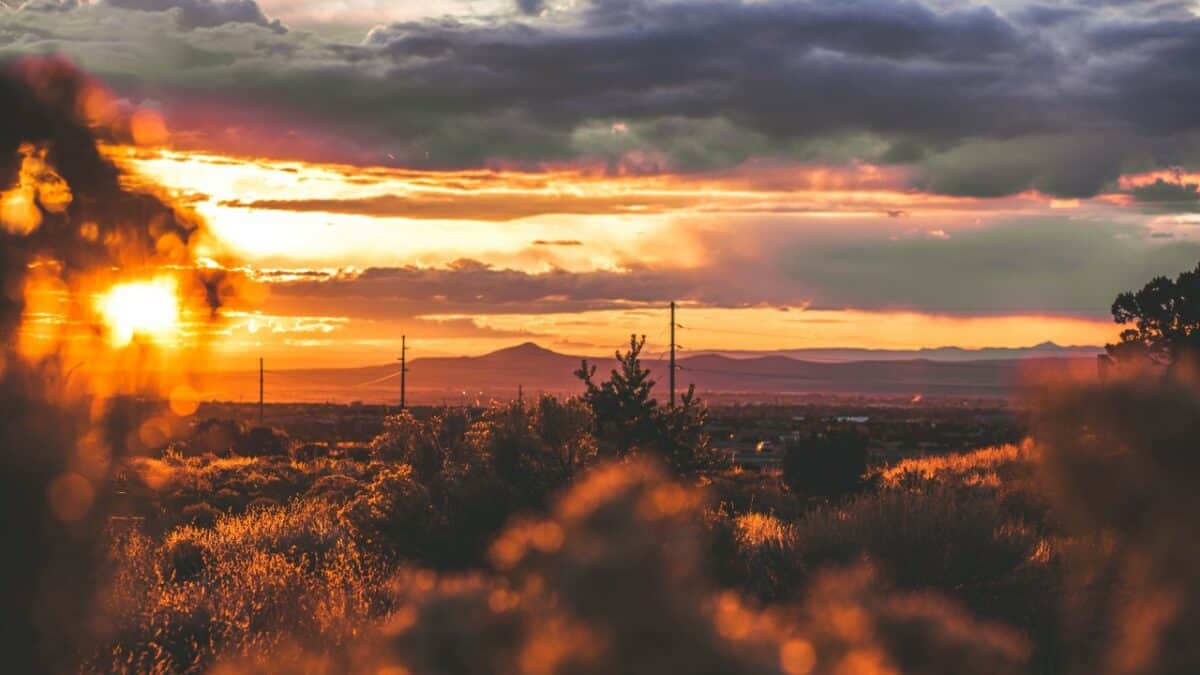
New Mexico is home to some of the most beautiful forests and grasslands in the world. To be precise, there are six national forests in New Mexico, and one grassland that is managed by one of the USFS offices.
The thing is, some of these forests are quite large and extend into neighboring states. A good example is the Coronado National Forest, which is largely located in Arizona.
Now, since forest ecosystems are different from the rest of the terrain due to constant fire hazards in the hot summer months, the rules and regulations surrounding camping are constantly tweaked by the authorities to answer to the current weather and other conditions.
For this reason, before you head out to any of these areas, it’s always a good idea to check out the USFS regulations for that particular National Forest (or the Kiowa National Grassland).
Another important duty of the USFS is making, updating, and publishing the so-called MVUM’s.
An MVUM stands for ‘Motor Vehicle Use Map‘ and it can be a great way to find the best forest roads for your camping vehicle and the best camping spots along the way.
On top of that, there are often downloadable digital maps and additional pieces of info that you can get for your iPhone or Android-based device. This way, you can get a detailed map of the area of your interest – and it’s usually completely free, too.
For clarity’s sake, we’ll compile the links for USFS sites on the left and the MVUM maps on the right, so you can easily access them both.
Here are the links to the official pages of these areas that you can visit to learn more:
- Santa Fe National Forest – rules and regulations; 🡪 Santa Fe NF MVUM
- Carson National Forest – rules and regulations; 🡪 Carson NF MVUM
- Cibola National Forest – rules and regulations; 🡪 Cibola NF & Kiowa NG MVUM
- Lincoln National Forest – rules and regulations; 🡪 Lincoln NF MVUM
- Coronado National Forest – rules and regulations; 🡪 Coronado NF MVUM
- Gila National Forest – rules and regulations; 🡪 Gila NF MVUM
- Kiowa National Grassland (managed by Cibola National Forest)
New Mexico Camping Do’s and Don’ts
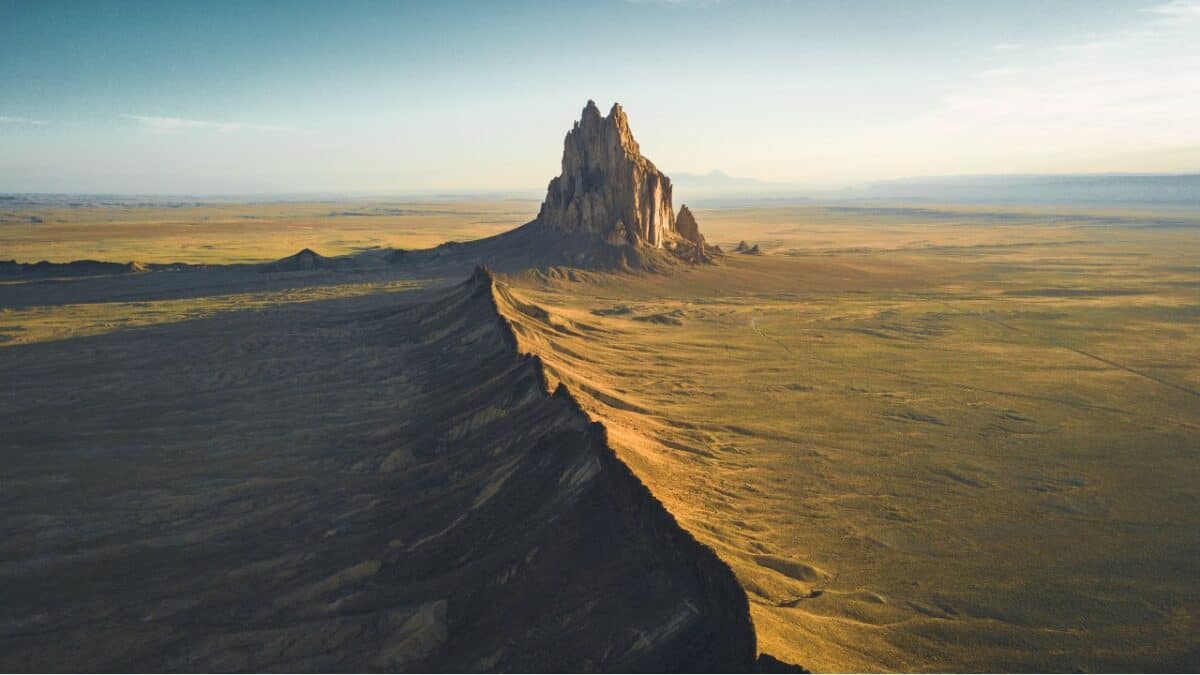
The thing is, embarking on a camping trip can be a great experience, but if you are not considerate enough of the environment, your stay, while pleasant for you, can make the surrounding nature worse off.
Worse still, you may even be looking at a well-earned fine.
To prevent such a turn of events, here are a couple of tips to make your camping trip a successful one without disturbing the New Mexico flora and fauna:
- Set up a Plan – Using one or more of the links we provided above, make a plan of action that you can use to determine what are the best camping spots for you. Make sure that in the area you want to go to dispersed camping is allowed and that you won’t experience any problems if you decide to go there.
- Don’t Attempt to Create a New Campsite – Either camp on campsites that someone already used and that you deem clean and interesting enough, or make sure to minimize your presence in the area by NOT creating a large settlement there.
- Get Rid of Waste Responsibly – This includes your chips bags, food wrapping, and other waste. You might want to consider carrying a portable toilet with you and burying the waste away from a water source before leaving.
- Don’t Take Anything from the Campsite – Whether it’s ancient native artifacts, or some chairs and other items you found there.
- Pay Attention to Fire Hazard Warnings – The USFS will issue forest fire warnings every day, so you know what to expect if you go camping that particular day. If you are making a fire, make sure it’s not near an easily-flammable part of the forest and that you put it out before you leave the area.
- Respect other Visitors – If there are other visitors in your general area, make sure you respect their personal space, don’t be overly loud, and always clean up after yourself.
- Mind the Wildlife – For both your and the safety of the wildlife in this area, it’s important to properly store your food and other amenities that may attract animals. For more info, check out our wild camping checklist.
Best New Mexico Dispersed Camping Areas
As we have already pointed out, New Mexico is home to some of the most beautiful camping areas in the world.
Upper Bonito Recreation Area
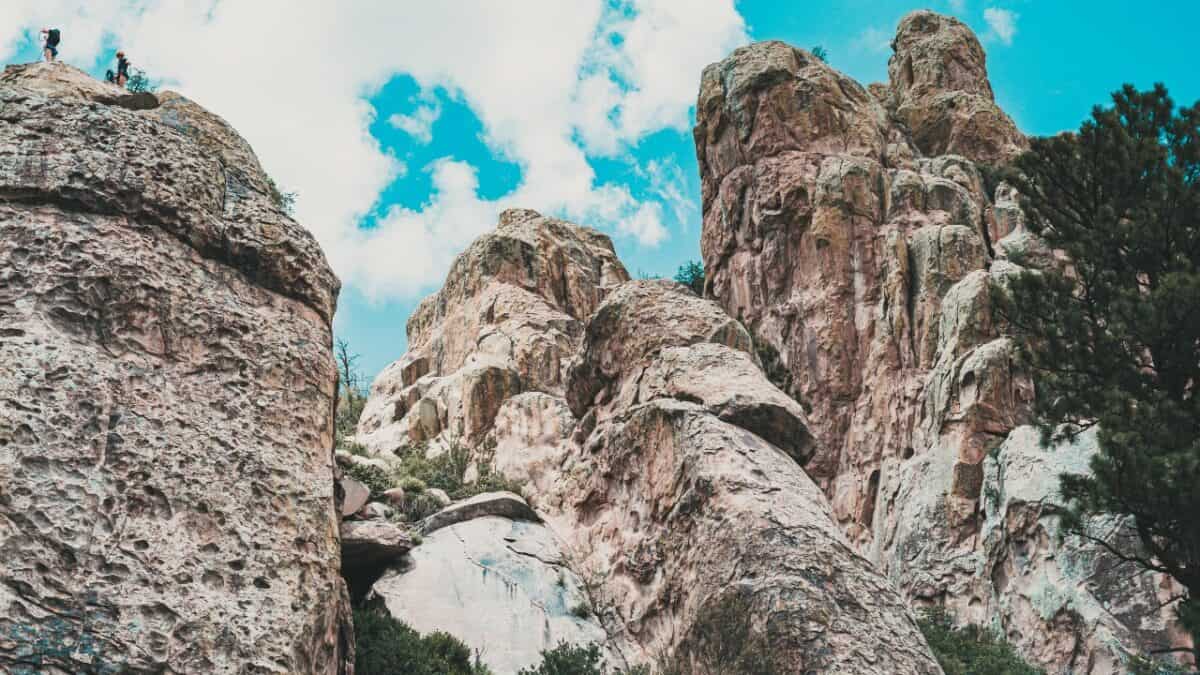
- Camping frequency: busy
- Restrooms: vault toilets
- Water: no
Located in the Lincoln National Forest, near White Mountain, the Upper Bonito recreation area can be a great camping spot for all sorts of vehicular and non-vehicular exploration efforts.
Whether you’re an RV kind of cozy camper or prefer to ATV your way through rugged mountain trails, the Upper Bonito area will offer you plenty of awesome-looking fun terrain to cover.
On the other hand, if you prefer to take things one step at a time – on foot – there are hiking trails here in abundance, too, so you won’t have to worry about being in competition with the four-wheelers.
The place can get quite busy, but given the sheer size of this area, you’ll certainly have no trouble finding the perfect camping spot for your needs.
Tres Piedras
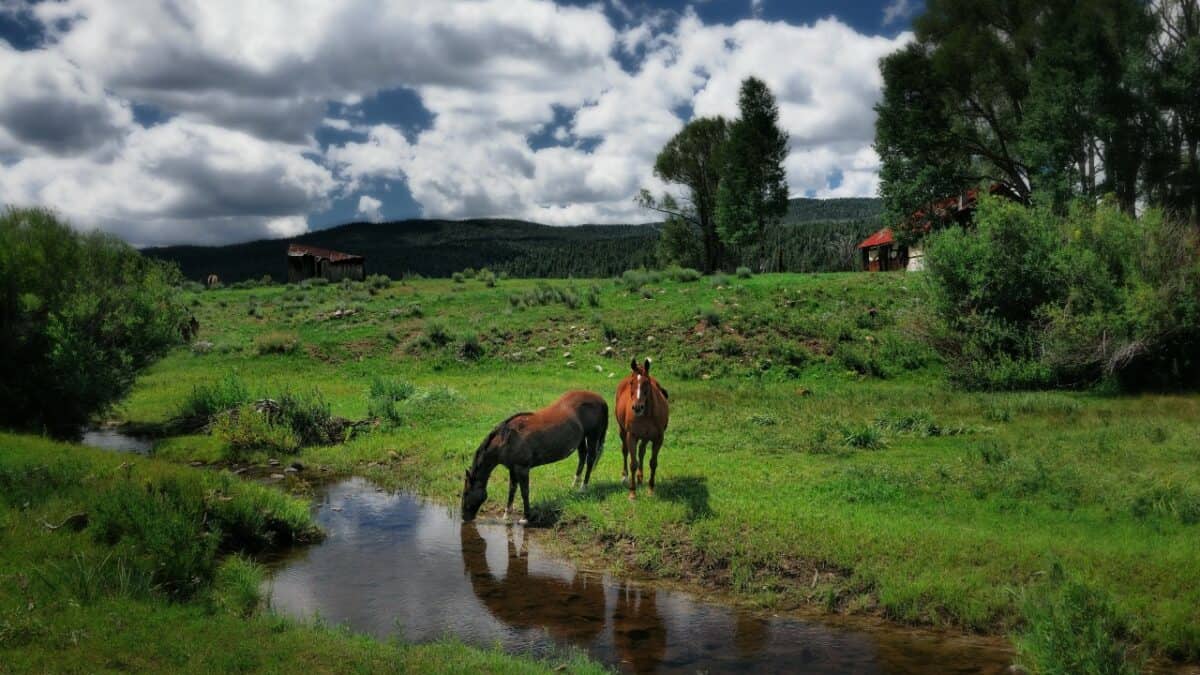
- Camping frequency: moderate
- Restrooms: not available
- Water: no
Containing all sorts of cool camping commodities that you can think of, Tres Piedras is a great place to start your camping adventure in New Mexico.
The great thing about this place is that it gives you some excellent camping options along forest paths, making accessing them easy.
That said, if ease of access is not necessarily on top of your priority list, you can always go down, or rather up, the path of more physically demanding activity such as hiking.
The Continental Divide Trail is nearby this area, so you can always veer off there to scale some of the most beautiful trails and natural obstacles you’ve ever seen.
Angel Peak Scenic Area
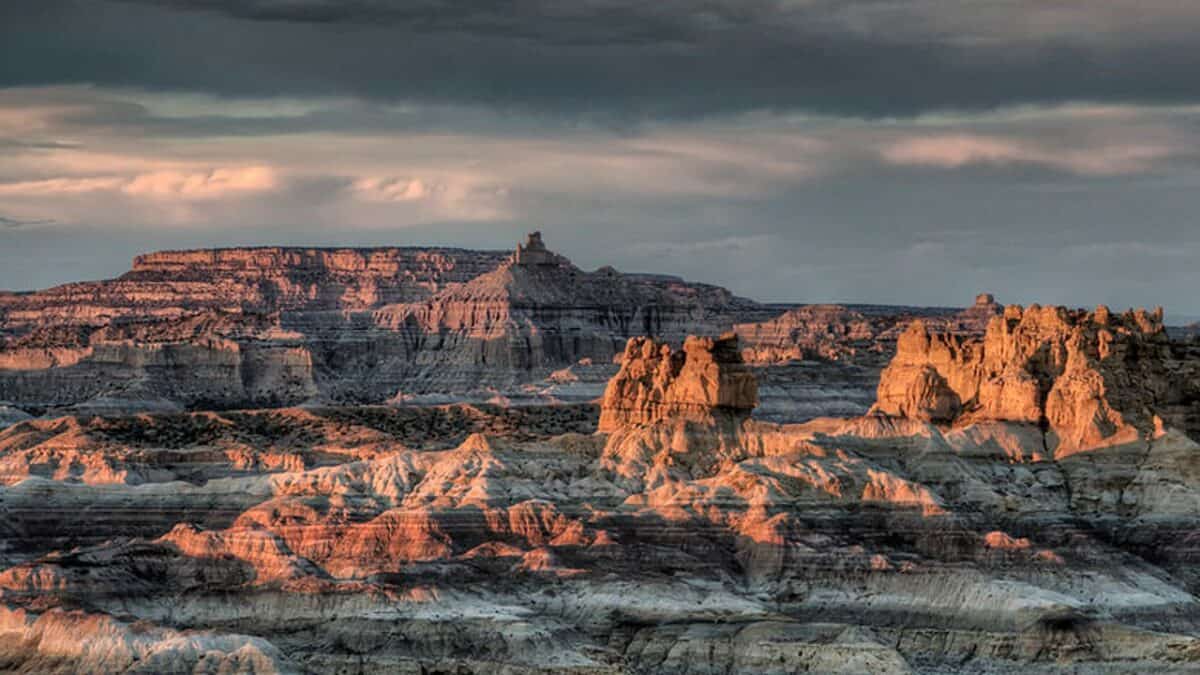
- Camping frequency: moderate
- Restrooms: vault toilets
- Water: no
As the name suggests, the campsite is quite scenic with plenty of beauteous sights that you’d struggle to find elsewhere that easily.
This campground is not entirely dedicated to primitive camping, since it does come with some well-organized seating arrangements, toilets, and some designated camping spots, for good measure.
That said, this doesn’t translate to well-kempt lawns, boring neighbors, and draconic restrictions in regard to how loud you can play your music.
Instead, you get the best of both worlds – gorgeous scenery on one hand and some of the basic amenities that you may or may not choose to use.
For example, one thing that can come in handy in heavy torrential rain would be the overhead shelters that protect you from getting soaked.
There aren’t that many visitors that come here that often – so, if you prefer low-frequency camping spots where you can feel more in touch with nature – Angel Peak can be just the thing for you.
Cosmic Campground
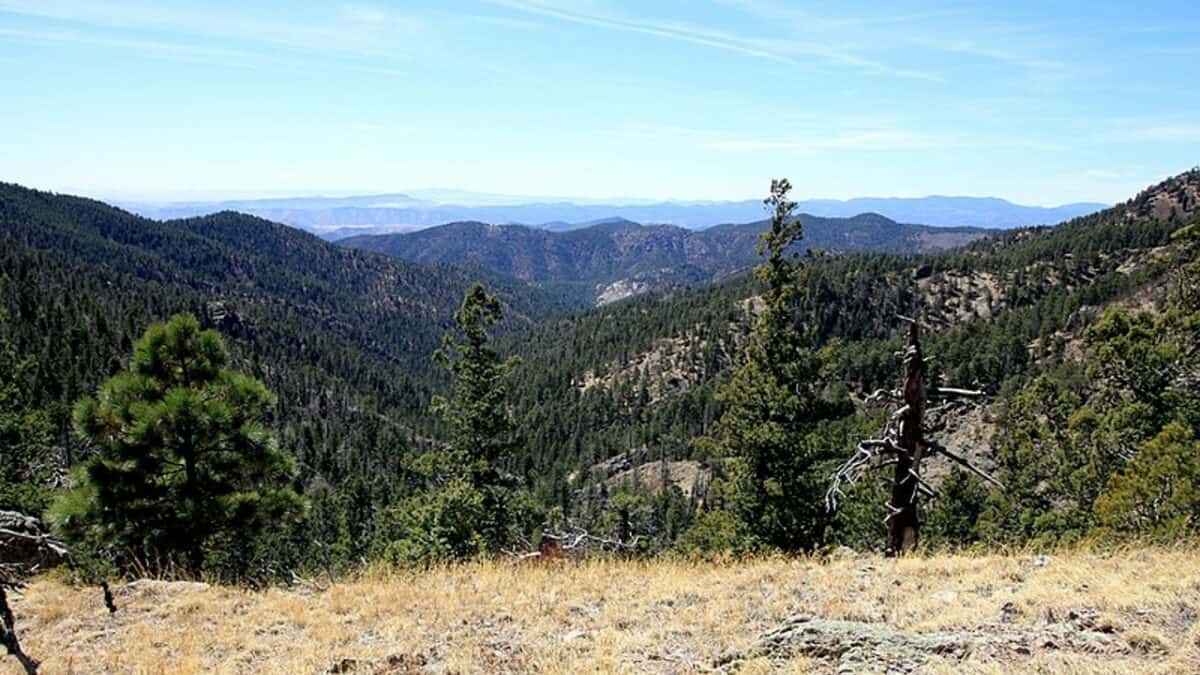
- Camping frequency: light
- Restrooms: vault toilets
- Water: no
Even though this destination isn’t necessarily designated as a dispersed camping area, it certainly features many excellent camping features that you can enjoy and make good use of.
Easily accessible and free to stay in, this broadly-popular camping spot is well-known and beloved for its star-gazing potential – from which this place also takes its name.
To enjoy this aspect of this campsite, you have four spots dedicated exclusively for star-gazing.
So, whether you’re an amateur astronomer, or you just prefer watching the stars and the tranquil night sky sans – this site can be a fantastic way to spend your time outdoors in New Mexico.
This place is even more enchanting because it is situated within the depths of the Gila National Forest – one of the most remote and untouched places in the entire US.
Of course, the great thing about this campsite is that despite its rather remote location, it’s pretty easily accessible. If you have decided that New Mexico is not your cup of tea after all, check out our post on camping in Michigan.
Conclusion
All in all, whether you’re an RV kind of person who likes to carry everything from a wrench set to the kitchen sink, or a person who packs up under five minutes and sets off on a whim – New Mexico will give you everything you need to have great camping fun – and then some.
Of course, proper preparation for the trip ahead of time and adhering to the unwritten rules of camping is always the way to go.
That said, if you do your homework on New Mexico, so to speak, and make sure to give this beautiful and wild US state its due respect – you’ll undoubtedly have the time of your life camping in one of its many gorgeous forests, grasslands, and other areas.

I love hiking, backpacking, and camping. From the Camino de Santiago to the West Highland Way in Scotland or simply a great day hike on the weekend. Hiking refreshes me, my mind, and keeps my body reasonably fit. So far I have walked three Camino routes and many other long distance hikes in the UK, Canada, and around the rest of Europe. One of the best was my hike up Ben Nevis.

